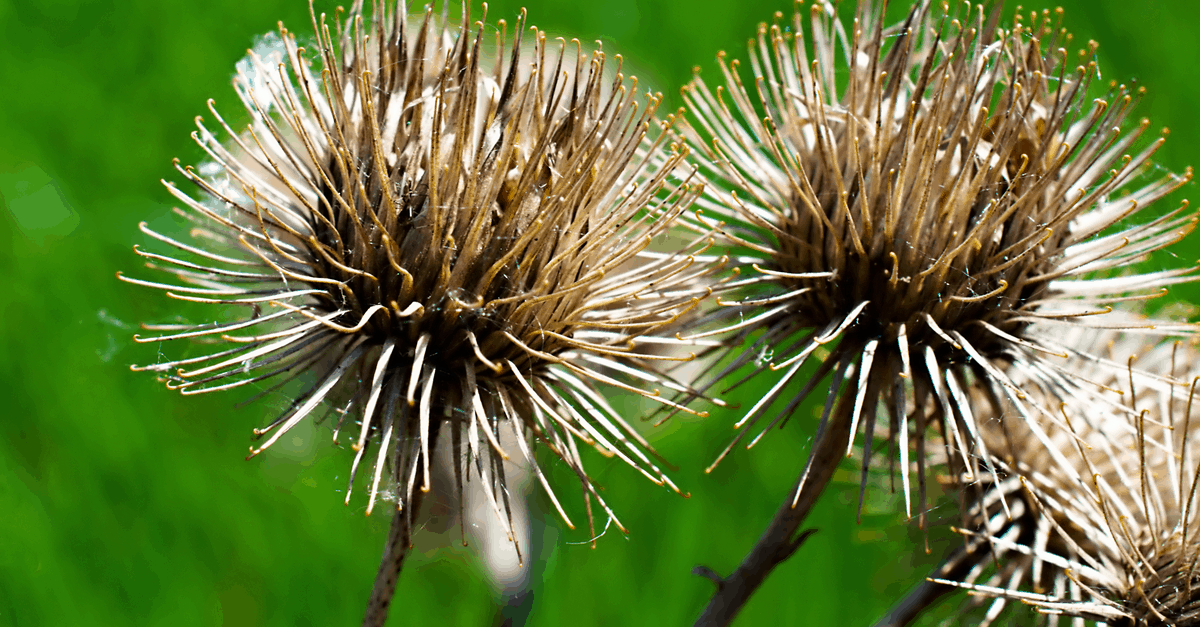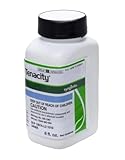Burdock = (Arctium minus)
Burdock belongs to the family “Asteraceae” in the Genus “Arctium”. It usually grows throughout the summer in tropical and subtropical humid climates due to excessive moisture needs. During the first year of growth, Burdock resembles Rhubarb. But, have no genetic similarity with that. Burdock can grow up to 2 meters tall having multiple branches emerging from its hollow stem. Burdock is declared an invasive plant species but, it's more threatening for the large agricultural settings and paddocks than turf grasses and landscapes.
Origin and Distribution
Having its stronghold and origin in Europe and Asia, Burdock has now widely propagated throughout the US and other parts of the World. It can be found along roadsides and around water ponds in pastures and lands having low fertility. Usually, it chooses the soils which are rich in nitrogen. Burdock can also grow in hard-to-reach locations where only livestock can reach.
Identification

Burdock possesses heart-shaped large leaves that appear wooly on the undersides. The stem is erect, grooved, and hollow with several branches that originate from the lower parts of the stem. The stem is often green and sometimes reddish-purple. The upper surfaces of the leaves are coarse. A fully mature plant may have a leaf size up to 24 inches or more. Flowering starts from early summer to early winter in the 2nd year of growth. Burdock has several purple flowering clusters which appear at the end of the leaf axis. The flowers' heads are covered with spines having hooked-shaped structures.
Burdock Lifecycle
Burdock is a biennial herb that doesn't disburse flowers during the first year of growth. Its plant achieves a fair height during the first year. It overwinters and starts new growth from the height attained during the first year. Early flowering may appear in late spring depending on the available growing conditions especially plenty of sunshine and moisture. Hooked-shaped seeds get stuck in the livestock furs that reach new destinations. Burdock seeds can remain dormant until they get sufficient moisture to break dormancy to continue growth.
Burdock-Spreading Patterns
Burdock has never been a problem in the cultivated field. However, the areas which were freshly cleared from the forest lands can face infestations during the initial years. Usually, the pastures, rangelands, and paddocks which face heavy livestock traffic due to the grazing activities show the existence of Burdock.
Livestock, especially goats and sheep usually, graze at locations that are hard to reach by the herdsmen monitoring them. Burdock often grows on similar types of sites. The livestock furs carry the Burdock seeds from such locations to spread at a new grazing site. These transported seeds whenever receive a favorable condition for growth, start germinating.
Amazing Facts About Burdock
Burdock-Prevention and Control
Cultural Control
The purpose of cultural control must be to stop seed production. A limited number of plants can be hand-pulled whereas, the plants with a developed tap root system need removing from the landscape including the roots. Otherwise, it can sprout and produce seeds for dispersal. Any cutting or Mowing is practiced before the seed is set.
Control with Pre-Emergent Herbicides
Eraser 41% Glyphosate
When large areas are under infestation, the growers may choose a pre-emergent, non-selective herbicide such as Roundup or Glyphosate. The addition of Paraquat in RoundUp ready solution can trigger Burdock killing which, starts from day-3. Non-selective can be used in areas where no other vegetation is desired.
Control with Post-Emergent Herbicides
Tenacity Turf Herbicide
Tenacity contains Mesotrione which acts both as a pre-emergence and Post-emergence herbicide. It can be applied precautionary after seeding grasses if you're not aware of what types of weed could emerge. It absorbs both through roots and the foliage and provides complete coverage over broadleaf weeds including Burdock and the weeds which haven't emerged yet. Spot application when Burdock starts sprouting is also possible. A ½ teaspoon of Mesotrione in 1-gallon of water can cover about 100 square meter turf area.
- Tenacity is a systemic pre-emergence and post-emergence herbicide for the selective contact and residual control of weeds in turfgrasses.
- When applied as a pre-emergent, weeds absorb Tenacity during emergence from the soil.
- Target pests: Barnyardgrass, Carpetweed, Chickweed, Clover, Crabgrass (large & smooth), Dandelion, Foxtail, Goosegrass, Henbit, Yellow Nutsedge, Purslane, Thistle, Wild Carrot and others
Turflon Ester
Turflon Ester is a specialty herbicide and new chemistry for controlling broadleaf weeds in cool-season grasses only. It has excellent broadleaf weed control in perennial Bluegrass, Perennial Ryegrass, and Tall Fescue turfgrasses. Its Active ingredient is Triclopyr which constitutes 60.45% of the solution with Petroleum distillates up to 39.55%.
2-4-D Amine Salt
Another excellent chemistry to use against Burdock when the weed has developed considerable foliage before flowering during the vegetative stage. The active ingredient ratio is almost 46.8% weight/volume. Dimethylamine salts work well when temperatures are moderate during spring and early summer. Their efficacy decreases with an increase in the surface temperature. A 1-Quart of the emulsion can cover 4000 meters' area, approximately using a minimum of 25 gallons of water. For small applications, add 3 tablespoons of 2,4-D in 1-gallon of water to cover between 90-100 square meters.
Weed Control for Lawns
It's a brilliant combination of Dicamba, 2,4-D, and Mecoprop-p acids that effectively control all broadleaf weeds including Burdock. This combination is available in easy-to-use Granule chemistry which performs efficiently if you irrigate your lawn before applying it. The mode of action becomes broad once the granules dissolve in standing water and the liquid penetrates Burdock’s root. A 14 pounds' bag can treat 450 square meters of the area covered with turfgrasses irrespective of the broadleaf weeds present there. Overall, the product may be slow-acting and could show results in 3-4 weeks. Otherwise, Mowing and subsequent watering are suggested. Be sure that the product shows maximum efficacy below 90.0°F.
Learn How to control and get rid of other weeds in our complete Yard Weeding Guide.





